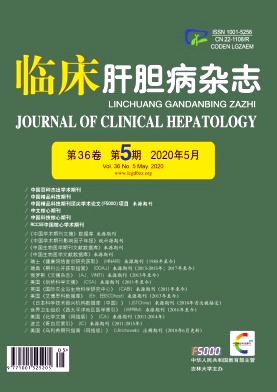|
[1] GOLABI P, FAZEL S, OTGONSUREN M, et al. Mortality assessment of patients with hepatocellular carcinoma according to underlying disease and treatment modalities[J]. Medicine(Baltimore), 2017, 96(9):e5904.
|
|
[2] MEDAVARAM S, ZHANG Y. Emerging therapies in advanced hepatocel ular carcinoma[J]. Exp Hematol Oncol, 2018, 7:17.
|
|
[3] FERLAY J, COLOMBET M, SOERJOMATARAM I, et al. Estimating the global cancer incidence and mortality in 2018:GLOBOCAN sources and methods[J]. Int J Cancer, 2019,144(8):1941-1953.
|
|
[4] BRAY F, FERLAY J, SOERJOMATARAM I, et al. Global cancer statistics 2018:GLOBOCAN estimates of incidence and mortality worldwide for 36 cancers in 185 countries[J]. CA Cancer J Clin, 2018, 68(6):394-424.
|
|
[5] GHOURI YA, MIAN I, ROWE JH. Review of hepatocel ular carcinoma:Epidemiology, etiology, and carcinogenesis[J]. J Carcinog, 2017, 16:1.
|
|
[6] LUPAS AN, GRUBER M. The structure of alpha-helical coiled coils[J]. Adv Protein Chem, 2005, 70:37-78.
|
|
[7] YIN DT, XU J, LEI M, et al. Characterization of the novel tumor-suppressor gene CCDC67 in papillary thyroid carcinoma[J]. Oncotarget, 2016, 7(5):5830-5841.
|
|
[8] JIANG GY, ZHANG XP, ZHANG Y, et al. Coiled-coil domaincontaining protein 8 inhibits the invasiveness and migration of nonsmal cel lung cancer cells[J]. Hum Pathol, 2016, 56:64-73.
|
|
[9] TANOUCHI A, TANIUCHI K, FURIHATA M, et al. CCDC88A,a prognostic factor for human pancreatic cancers, promotes the motility and invasiveness of pancreatic cancer cells[J]. J Exp Clin Cancer Res, 2016, 35(1):190.
|
|
[10] HSIAO KY, LIN YC, GUPTA SK, et al. Noncoding effects of circular RNA CCDC66 promote colon cancer growth and metastasis[J]. Cancer Res, 2017, 77(9):2339-2350.
|
|
[11] KUTSCHE K, GLAUNER E, KNAUF S, et al. Cloning and characterization of the breakpoint regions of a chromosome 11;18 translocation in a patient with hamartoma of the retinal pigment epithelium[J]. Cytogenet Cel Genet, 2000, 91(1-4):141-147.
|
|
[12] ROBINSON MD, MCCARTHY DJ, SMYTH GK. edgeR:A Bioconductor package for differential expression analysis of digital gene expression data[J]. Bioinformatics, 2010, 26(1):139-140.
|
|
[13] DILLIES MA, RAU A, AUBERT J, et al. A comprehensive evaluation of normalization methods for Illumina high-throughput RNA sequencing data analysis[J]. Brief Bioinform, 2013,14(6):671-683.
|
|
[14] SUBRAMANIAN A, TAMAYO P, MOOTHA VK, et al. Gene set enrichment analysis:A knowledge-based approach for interpreting genome-wide expression profiles[J]. Proc Natl Acad Sci U S A, 2005, 102(43):15545-15550.
|
|
[15] KANEHISA M, FURUMICHI M, TANABE M, et al. KEGG:New perspectives on genomes, pathways, diseases and drugs[J].Nucleic Acids Res, 2017, 45(D1):d353-d361.
|
|
[16] SUBRAMANIAN A, KUEHN H, GOULD J, et al. GSEA-P:A desktop application for Gene Set Enrichment Analysis[J].Bioinformatics, 2007, 23(23):3251-3253.
|
|
[17] MAEYAMA Y, OTSU M, KUBO S, et al. Intracellular estrogen receptor-binding fragment-associated antigen 9 exerts in vivo tumor-promoting effects via its coiled-coil region[J]. Int J Oncol, 2011, 39(1):41-49.
|
|
[18] LIU Z, MAI C, YANG H, et al. Candidate tumour suppressor CCDC19 regulates miR-184 direct targeting of C-Myc thereby suppressing cell growth in non-small cell lung cancers[J]. J Cell Mol Med, 2014, 18(8):1667-1679.
|
|
[19] GENG W, LIANG W, FAN Y, et al. Overexpression of CCDC34 in colorectal cancer and its involvement in tumor growth, apoptosis and invasion[J]. Mol Med Rep, 2018, 17(1):465-473.
|
|
[20] HU DD, LI PC, HE YF, et al. Overexpression of coiled-coil domain-containing protein 34(CCDC34)and its correlation with angiogenesis in esophageal squamous cell carcinoma[J]. Med Sci Monit, 2018, 24:698-705.
|
|
[21] STARK GR, TAYLOR WR. Control of the G2/M transition[J].Mol Biotechnol, 2006, 32(3):227-248.
|
|
[22] GONG Y, QIU W, NING X, et al. CCDC34 is up-regulated in bladder cancer and regulates bladder cancer cell proliferation,apoptosis and migration[J]. Oncotarget, 2015, 6(28):25856-25867.
|
|
[23] PANI B, NUDLER E. Mechanistic insights into transcription coupled DNA repair[J]. DNA Repair(Amst), 2017, 56:42-50.
|
|
[24] MAHAMUD O, SO J, CHUA M, et al. Targeting DNA repair for precision radiotherapy:Balancing the therapeutic ratio[J].Curr Probl Cancer, 2017, 41(4):265-272.
|
|
[25] MURAI J. Targeting DNA repair and replication stress in the treatment of ovarian cancer[J]. Int J Clin Oncol, 2017, 22(4):619-628.
|
|
[26] GENTIEN D, KOSMIDER O, NGUYEN-KHAC F, et al. A common alternative splicing signature is associated with SF3B1 mutations in malignancies from different cell lineages[J]. Leukemia, 2014, 28(6):1355-1357.
|













 DownLoad:
DownLoad: